Every year about this time deer hunters start checking and reviewing their gear to decide about possible equipment upgrades.
This gear works for me. Here are some items I have tested thoroughly and regularly use, that will be used this fall, and I would buy again.
by Leon Pantenburg
DISCLAIMER: I bought some of these products to use and test, and others were supplied by the manufacturer. My testing standards are the same for all. I won’t recommend a product I haven’t tested, or that I wouldn’t personally use. I never promise anything but a fair shake.
Deer and elk hunters, by definition, are gear junkies. We are always looking for the latest and greatest items that can make us more efficient (or less efficient, if you’re into primitive weapons hunting), more comfortable or safer. I am among those most deeply afflicted. As a gear tester, I can’t wait to get my hands on the latest innovations.
That said, I get this question a lot: What gear do you personally use when you’re going hunting? Would you replace those items with that same identical thing?
Here are (at least) ten that have proven themselves. I have used, and will continue to use, these extensively.
Bark River UP Bravo: Deer hunting knives are their own topic, and your knife, and skill using it, will determine how good the meat tastes after the hunt is over.
New in 2020, the UP Bravo and UP Gunny (initials stand for Upper Peninsula of Michigan) are knives I would design for me. The UP combines the best features of two superb knives. The Canadian-style leaf blade shape comes from the Ambush Tundra, one of my go-to hunting knives. The handle is the time-tested and proven Bravo handle.
The Tundra and the Bravo 1.25 LT have been my go-to hunting knives for the past several years. If I could only choose one hunting knife to use from here on out, I could be happy with either one. But I think the UP is going to work really, really well, and it may go to the head of the class. I’ll let you know.
Bark River Kalahari Sportsman: This is my most-used knife in the kitchen and in the field. The Sportsman works really well for slicing and cutting, and it is a superb boning knife for meat cutting and processing big game animals. This knife goes on every outing.
Danner™ Pronghorns: I just got a pair of these boots in August, 2020 and I wore them extensively during the 2020-2021 deer season. My brother, Michael Pantenburg swears by his Pronghorns. Mike is a very experienced deer, antelope and elk hunter, and he won’t put up with gear that doesn’t measure up in the field. I trusted his expertise and recommendations for gear. Mike has worn his Pronghorns for several seasons now, and comments that they are light, sturdy and comfortable. He will buy another pair when his eventually wear out.
I have had good luck with Danners. My Danner Cougars have been worn in hunts in several states over the past decade, and they have proven to be excellent fall weather hunting boots. I really like my Danner Coyote Fullbore hot boots – they are cool and comfortable on long hikes.
Muck Boots™: I use knee-high waterproof boots extensively. When I get to guide with Quapaw Canoe Company on the lower Mississippi River, high boots are standard footwear. The guides are in and out of canoes all day, frequently in ankle to knee deep water. When the weather gets colder, this can be a chilly proposition and soggy, cold feet are a given.
But when it’s hot, your feet sweat inside the boot until they are soaking wet. It seems to be a no-win situation.
These XPRESSCOOL™ MUCK BOOTS are the best of this style that I have ever worn. They feature the XpressCool Lining that keeps feet cool and dry in warm weather. They are comfortable when the temperatures get lower in the fall, and with the right socks, they are comfortable at lower temperatures.
Sled: My elk hunting buddies were surprised when I took a pink kids’ plastic toboggan out of my rig as we headed out to retrieve a downed cow elk. We were in a desert wilderness area that banned wheeled vehicles, and it was either drag or carry the carcass out.
We cut off the lower limbs and gutted the animal, then tied it onto the toboggan. Three of the guys were hitched to the front of the toboggan and the elk was hauled without undue effort.
In 2019, I bought a Eagle Claw JS1 Utility Jet Sled. I deer hunt alone in the Mississippi swamps, generally, and of necessity must haul out animals by myself. I measured the area in the back of my SUV before ordering my sled, and the 54″ length x 24″ width model fits perfectly. Last deer season, I brought out three deer on my sled by myself, and it worked really well to haul out the animal and all my gear.
At the SUV, I can lift up one end of the sled and put it on the tailgate then shove the rest of the sled in. No struggle and any mess stays in the sled. At the skinning rack, the sled is placed under the hanging carcass to catch any drippings. When the job is done, it’s easy to drag the scraps to the gully for distribution to the varmints.
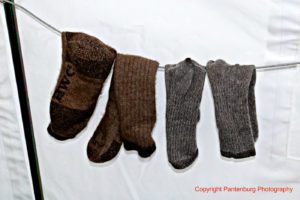
Quality wool socks are an investment in warm feet.
Socks: Quality boots with cheap cotton athletic socks is false economy. Cotton absorbs moisture, which means your feet will eventually be in soggy socks that softens the skin on your feet and makes them cold.
I tried out Buffalo Wool™ socks several years ago, and I love them. They are warm, comfortable, stay up easily and breathe well. They are my go-to socks in hunting books, and very well in my Muck Boots. My Buffalo Wool fedora is my go-to outdoors hat.

Rainsuit Beretta™ and TruSpec™ I’ve used both of these rainsuit systems, and I’d have a hard time picking one over the other. Both perform to specs, both are roomy and comfortable and both will keep you dry under the most extreme conditions. I would give the nod to the TruSpec rain coat, though, because it has pit zips. I have found these zippers to be excellent for ventilation, and for dissipating moisture generated from doing some hard physical activity.
The Beretta system, on the other hand, is less bulky. The jacket gets rolled up and carried in my daypack when I’m going to be doing a lot of hiking.
Tactical pants: I like quality tactical pants. If an item is designed for hardcore military/police/first responder use, it should work just fine for outdoorspeople. These pants have worked well for me: UF Pro P-40 All-Terrain pant, Tru Spec 24-7 Xpedition™ Pants, and 5.11 poly-cotton ripstop TACLITE PRO PANTS. I’m currently testing Beretta’s BDUs, and wouldn’t be without my wool pants.
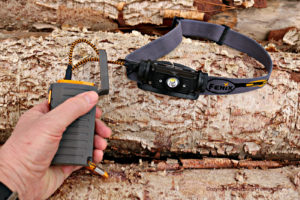
A combo you can rely on: The myCharge battery charges my Fenix rechargeable headlamp.
Fenix headlamp: I love headlamps, and think one should be in everyone’s emergency gear. This Fenix HL60R RechargeableHeadlamp deserves consideration for your emergency gear and/or Bug Out Bag. I have used my current Fenix rechargeable for going on four years, and it is used hard and often.
It has five intensity settings, ranging from five lumens for a soft glow for reading in the tent, to a bright spotlight with 950 lumens. The light can be charged with a cigarette lighter plug or solar panels.
MyCharge™ batteries: I have used several myCharge batteries for several years, and they are exceptionally reliable. My wife takes one when she travels so she can always have power for her laptop. I include a couple of the smaller units on the Mississippi to power flashlights, computers etc. The batteries can be recharged during the day with solar panels.
Garmin eTrex™ GPS: I love gee-whiz technology but I don’t want all my eggs in the same basket. I could use a phone GPS, and probably get along just fine. Bu if my phone goes dead (and Murphy states that this will happen at the worst possible moment) I don’t want my GPS to also go down.
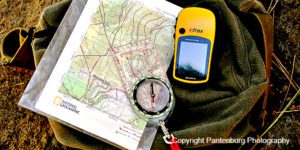
My eTrex GPS, map and compass go on every trip into the backcountry.
I am currently on my third Garmin eTrex. The eTrex is a basic “nuts and bolts” GPS that is powered by two AA batteries. I find the map feature on more elaborate GPS units to be handy, but nothing can replace a real map and a compass. I won’t take a GPS out in the woods without both of those navigation tools.
Elk Mountain™ tent: This is a bonus item. I tried this tent out last fall in Mississippi’s Delta National Forest. I was deer hunting, and my nephew and a hunting buddy were hunting ducks. It rained on and off for three days. The 13 foot by 13 foot tent kept us dry and comfortable.
So those are my choices. As always, what works for me may not work for you. Consider where you will be hunting, the conditions and terrain that might be encountered and how you will handle the carcass after a successful harvest. Make your gear decisions based on research and sound advice from experts.
And never forget this: We are blessed to be able to hunt deer. Hunt ethically, do your best to make a clean, humane shot, and be thankful for a clean harvest.
Good luck!
Please click here to check out and subscribe to the SurvivalCommonSense.com YouTube channel – thanks!

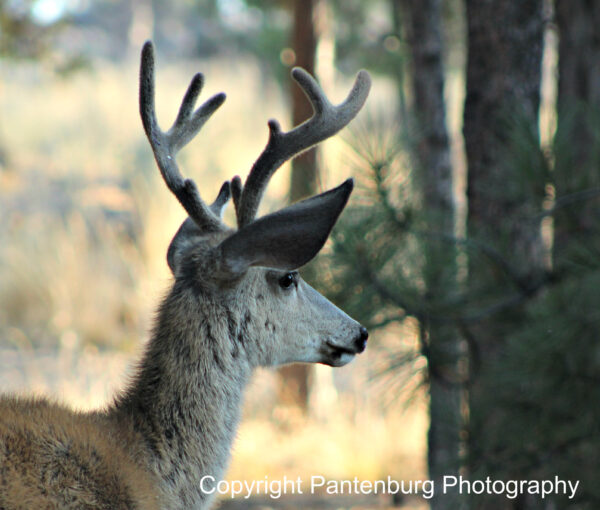
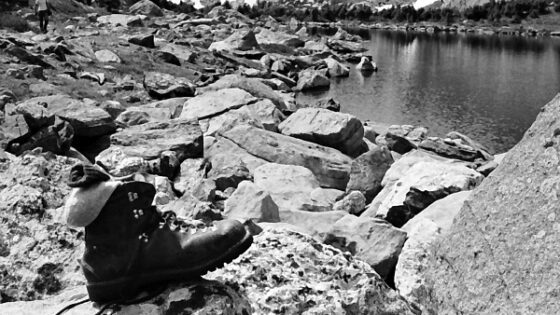
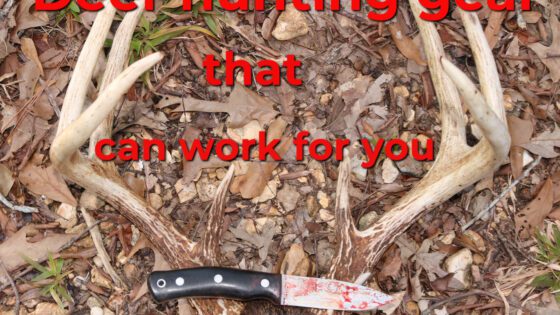
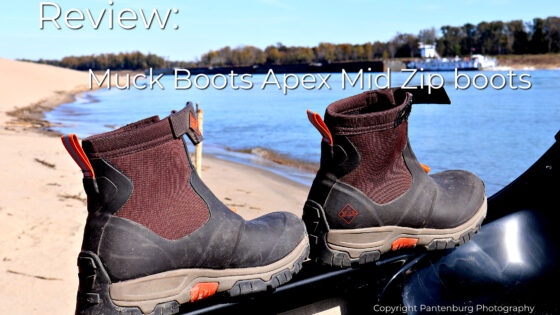
Leave a Reply